
safe-airdrop
A Safe app for distributing tokens from CSV transfer files.
Stars: 72
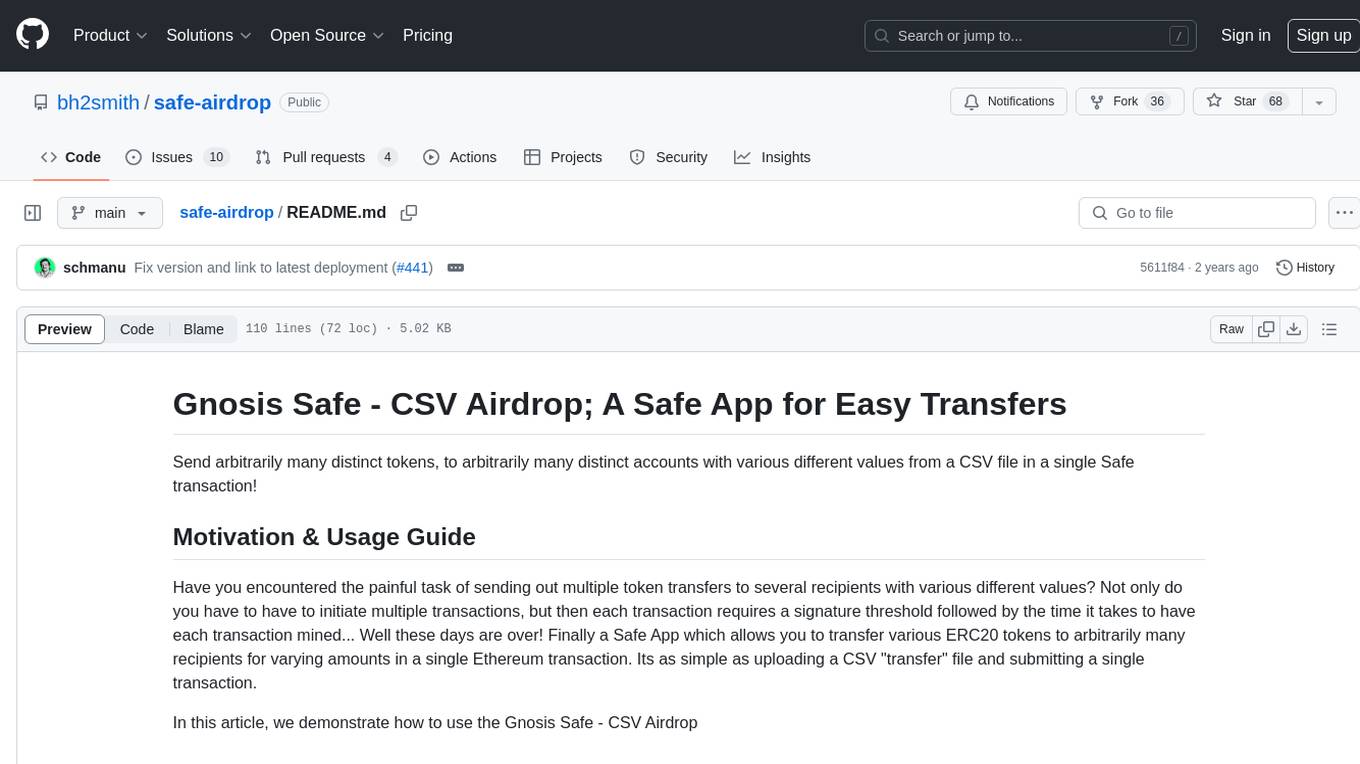
The Gnosis Safe - CSV Airdrop is a Safe App designed to simplify the process of sending multiple token transfers to various recipients with different values in a single Ethereum transaction. Users can upload a CSV transfer file containing receiver addresses, token addresses, and transfer amounts. The app eliminates the need for multiple transactions and signature thresholds, streamlining the airdrop process. It also supports native token transfers and provides a user-friendly interface for initiating transactions. Developers can customize and deploy the app for specific use cases.
README:
Send arbitrarily many distinct tokens, to arbitrarily many distinct accounts with various different values from a CSV file in a single Safe transaction!
Have you encountered the painful task of sending out multiple token transfers to several recipients with various different values? Not only do you have to have to initiate multiple transactions, but then each transaction requires a signature threshold followed by the time it takes to have each transaction mined... Well these days are over! Finally a Safe App which allows you to transfer various ERC20 tokens to arbitrarily many recipients for varying amounts in a single Ethereum transaction. Its as simple as uploading a CSV "transfer" file and submitting a single transaction.
In this article, we demonstrate how to use the Gnosis Safe - CSV Airdrop
If you find this app useful for your onchain activities or would like to contribute, donations are welcomed at
0xD011a7e124181336ED417B737A495745F150d248
This can also be done directly in the the app on your next airdrop via the "Donate" button!
The current version is deployed on IPFS at https://cloudflare-ipfs.com/ipfs/QmUFKPZSn73LiwznQ3PVWQXpcaWVdYrSM6c5DES2y24EYd
For older deployed versions, you can find the IPFS hash under Releases.
On mainnet or rinkeby, you can navigate to the Gnosis Safe Apps tab and load the app from "Add Custom App", then follow the instructions below to perform your first airdrop.
Note that, the mainnet version relies on the Uniswap Default Token List for token icons and number of decimal places. If you plan to airdrop a token that is not a member of this list, you will have to provide the number of decimal places as the decimals column on each unlisted token transfer in your transfer file.
Transfer files are expected to be in CSV format with the following minimally required columns:
- receiver: Ethereum address of transfer receiver.
- token_address: Ethereum address of ERC20 token to be transferred.
- amount: the amount of token to be transferred.
An example transfer file would look as follows:
token_address,receiver,amount
0xd0dab4e640d95e9e8a47545598c33e31bdb53c7c,0x1000000000000000000000000000000000000000,0.02
0xa7d1c04faf998f9161fc9f800a99a809b84cfc9d,0x3000000000000000000000000000000000000000,0.04
0x5592ec0cfb4dbc12d3ab100b257153436a1f0fea,0x5000000000000000000000000000000000000000,0.06
0x4dbcdf9b62e891a7cec5a2568c3f4faf9e8abe2b,0x7000000000000000000000000000000000000000,0.08
0x784b46a4331f5c7c495f296ae700652265ab2fc6,0x9000000000000000000000000000000000000000,0.10
Here we have 5 transfers, each for a different token, going to a different receiver and for different amounts. On the rinkeby network, these tokens are GNO, OWL, DAI, USDC and GUSD respectively.
Since native tokens do not have a token address, you must leave the token_address column blank for native transfers. An example transfer file containing only native transfers is here. Of course, these files can be mixed as follows;
token_address,receiver,amount
0xe91D153E0b41518A2Ce8Dd3D7944Fa863463a97d,0x206a9EAa7d0f9637c905F2Bf86aCaB363Abb418c,1
,0x7f01D9b227593E033bf8d6FC86e634d27aa85568,0.0002
which (on xdai) represents a transfer for 1 wxDai and 0.0002 native xDai.
Navigate to the APPS page from within your Gnosis Safe MultiSig. If you don't already have a Safe, you can create one for free!
- Open up the CSV Airdrop App, which looks like this:
- Upload your Transfer File and verify that the tokens, recipients and amounts are displayed as expected.
- Click Submit, execute and wait for your transaction to be mined.
A successful transaction will look like the following example on etherscan:
Install dependencies and start a local dev server.
yarn install
cp .env.sample .env
yarn start
Then:
- If HTTPS is used (by default enabled)
- Open your Safe app locally (by default via https://localhost:3000/) and accept the SSL error.
- Go to Safe Multisig web interface
- Create your test safe
- Go to Apps -> Manage Apps -> Add Custom App
- Paste your localhost URL, default is https://localhost:3000/
- You should see Safe Airdrop as a new app
- Develop your features from there
For Tasks:
Click tags to check more tools for each tasksFor Jobs:
Alternative AI tools for safe-airdrop
Similar Open Source Tools

safe-airdrop
The Gnosis Safe - CSV Airdrop is a Safe App designed to simplify the process of sending multiple token transfers to various recipients with different values in a single Ethereum transaction. Users can upload a CSV transfer file containing receiver addresses, token addresses, and transfer amounts. The app eliminates the need for multiple transactions and signature thresholds, streamlining the airdrop process. It also supports native token transfers and provides a user-friendly interface for initiating transactions. Developers can customize and deploy the app for specific use cases.
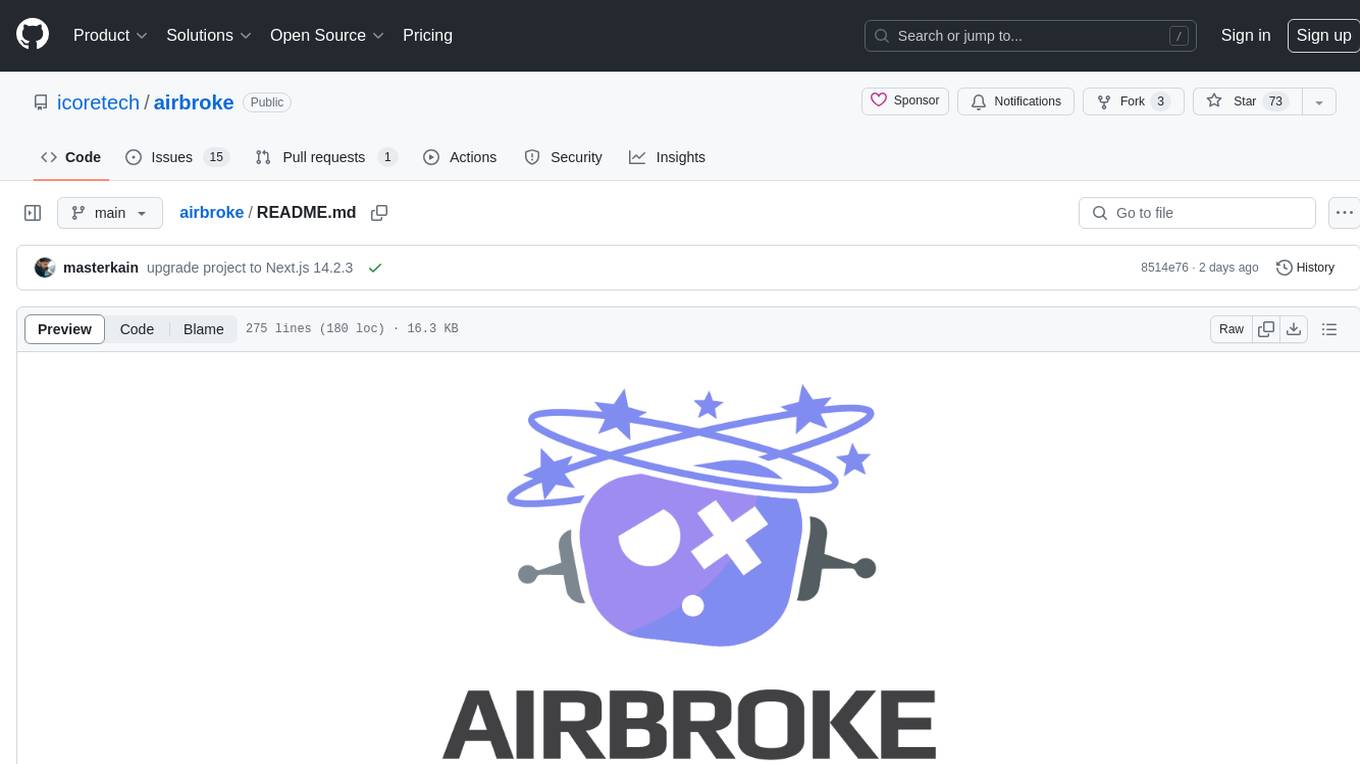
airbroke
Airbroke is an open-source error catcher tool designed for modern web applications. It provides a PostgreSQL-based backend with an Airbrake-compatible HTTP collector endpoint and a React-based frontend for error management. The tool focuses on simplicity, maintaining a small database footprint even under heavy data ingestion. Users can ask AI about issues, replay HTTP exceptions, and save/manage bookmarks for important occurrences. Airbroke supports multiple OAuth providers for secure user authentication and offers occurrence charts for better insights into error occurrences. The tool can be deployed in various ways, including building from source, using Docker images, deploying on Vercel, Render.com, Kubernetes with Helm, or Docker Compose. It requires Node.js, PostgreSQL, and specific system resources for deployment.
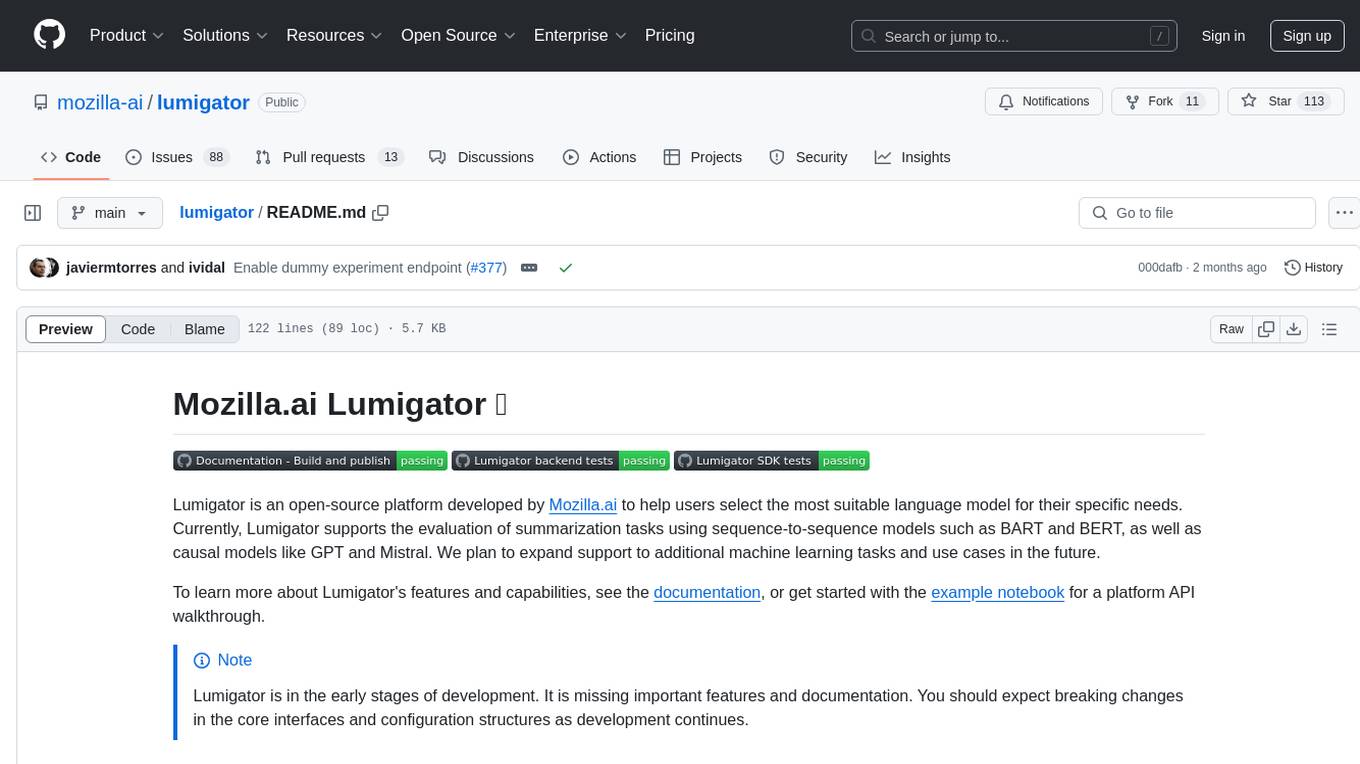
lumigator
Lumigator is an open-source platform developed by Mozilla.ai to help users select the most suitable language model for their specific needs. It supports the evaluation of summarization tasks using sequence-to-sequence models such as BART and BERT, as well as causal models like GPT and Mistral. The platform aims to make model selection transparent, efficient, and empowering by providing a framework for comparing LLMs using task-specific metrics to evaluate how well a model fits a project's needs. Lumigator is in the early stages of development and plans to expand support to additional machine learning tasks and use cases in the future.
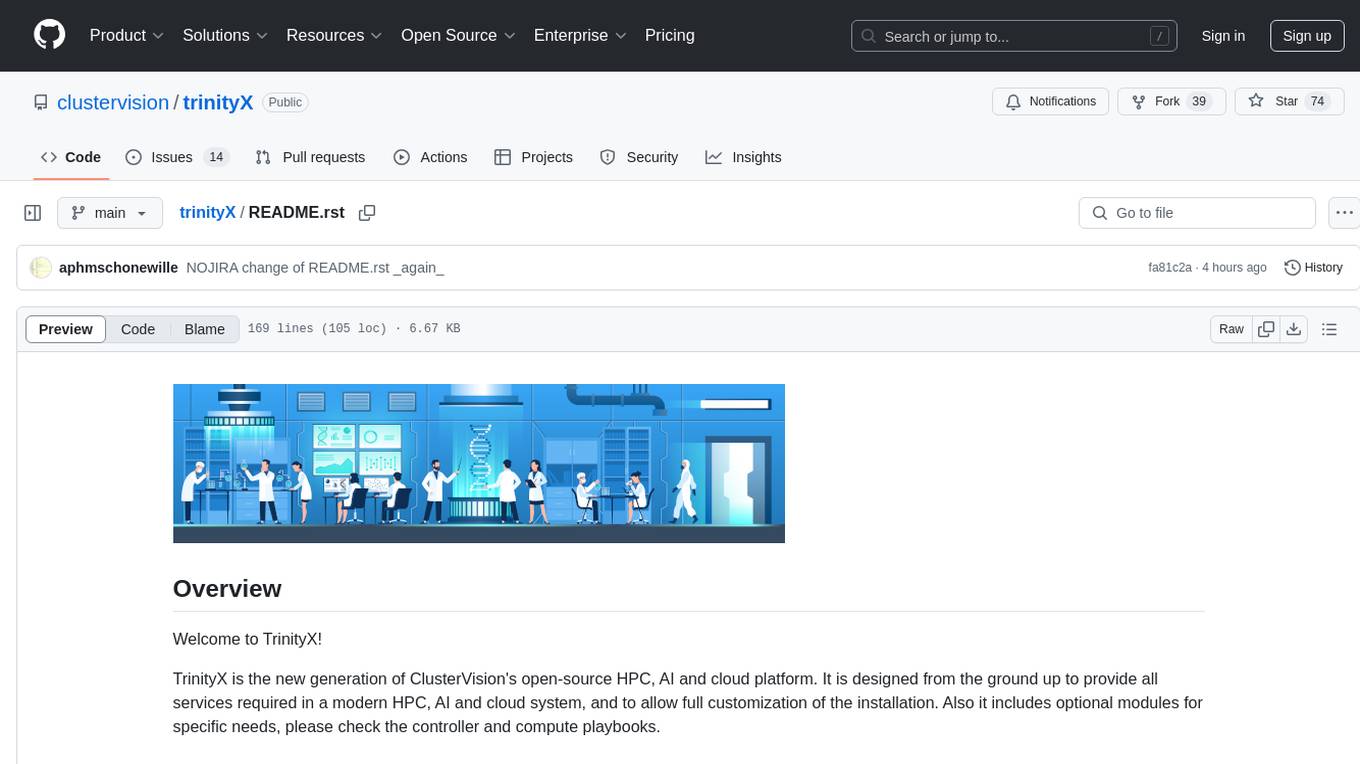
trinityX
TrinityX is an open-source HPC, AI, and cloud platform designed to provide all services required in a modern system, with full customization options. It includes default services like Luna node provisioner, OpenLDAP, SLURM or OpenPBS, Prometheus, Grafana, OpenOndemand, and more. TrinityX also sets up NFS-shared directories, OpenHPC applications, environment modules, HA, and more. Users can install TrinityX on Enterprise Linux, configure network interfaces, set up passwordless authentication, and customize the installation using Ansible playbooks. The platform supports HA, OpenHPC integration, and provides detailed documentation for users to contribute to the project.
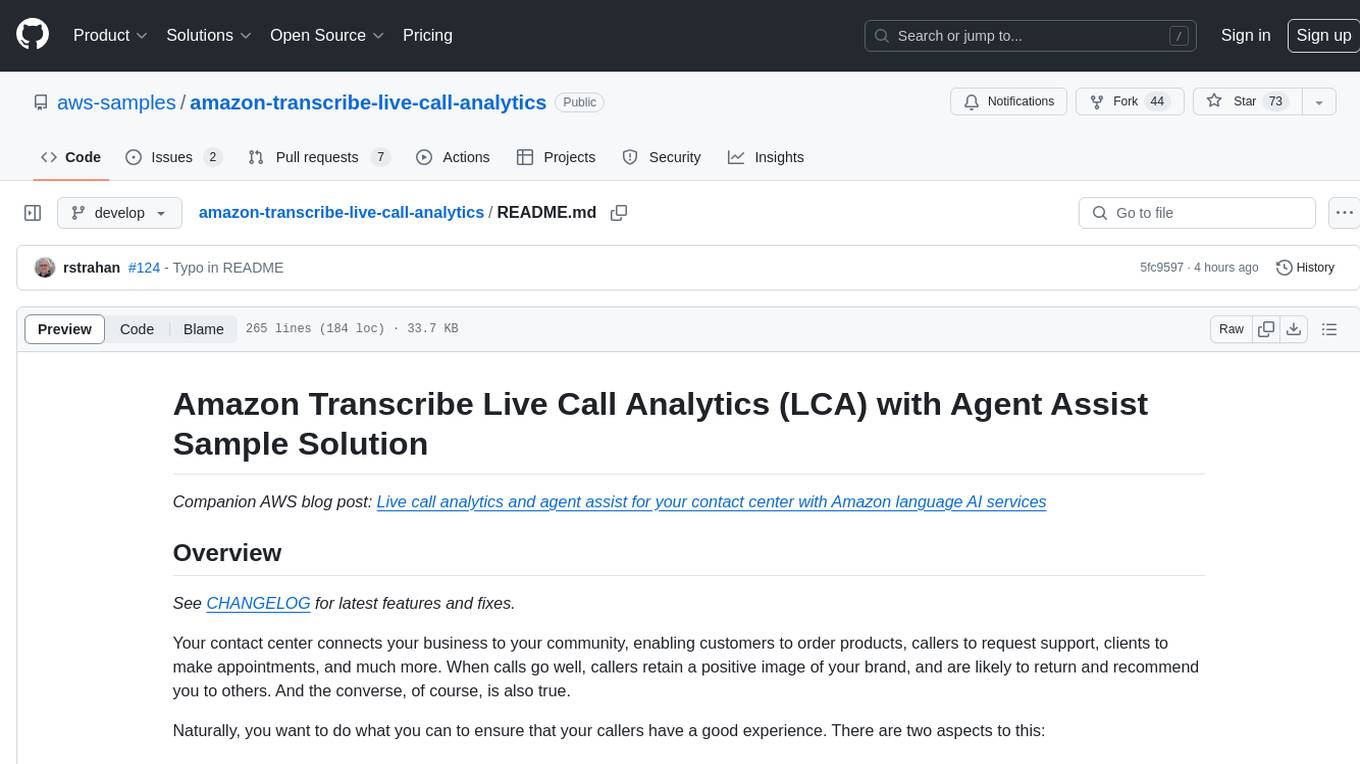
amazon-transcribe-live-call-analytics
The Amazon Transcribe Live Call Analytics (LCA) with Agent Assist Sample Solution is designed to help contact centers assess and optimize caller experiences in real time. It leverages Amazon machine learning services like Amazon Transcribe, Amazon Comprehend, and Amazon SageMaker to transcribe and extract insights from contact center audio. The solution provides real-time supervisor and agent assist features, integrates with existing contact centers, and offers a scalable, cost-effective approach to improve customer interactions. The end-to-end architecture includes features like live call transcription, call summarization, AI-powered agent assistance, and real-time analytics. The solution is event-driven, ensuring low latency and seamless processing flow from ingested speech to live webpage updates.
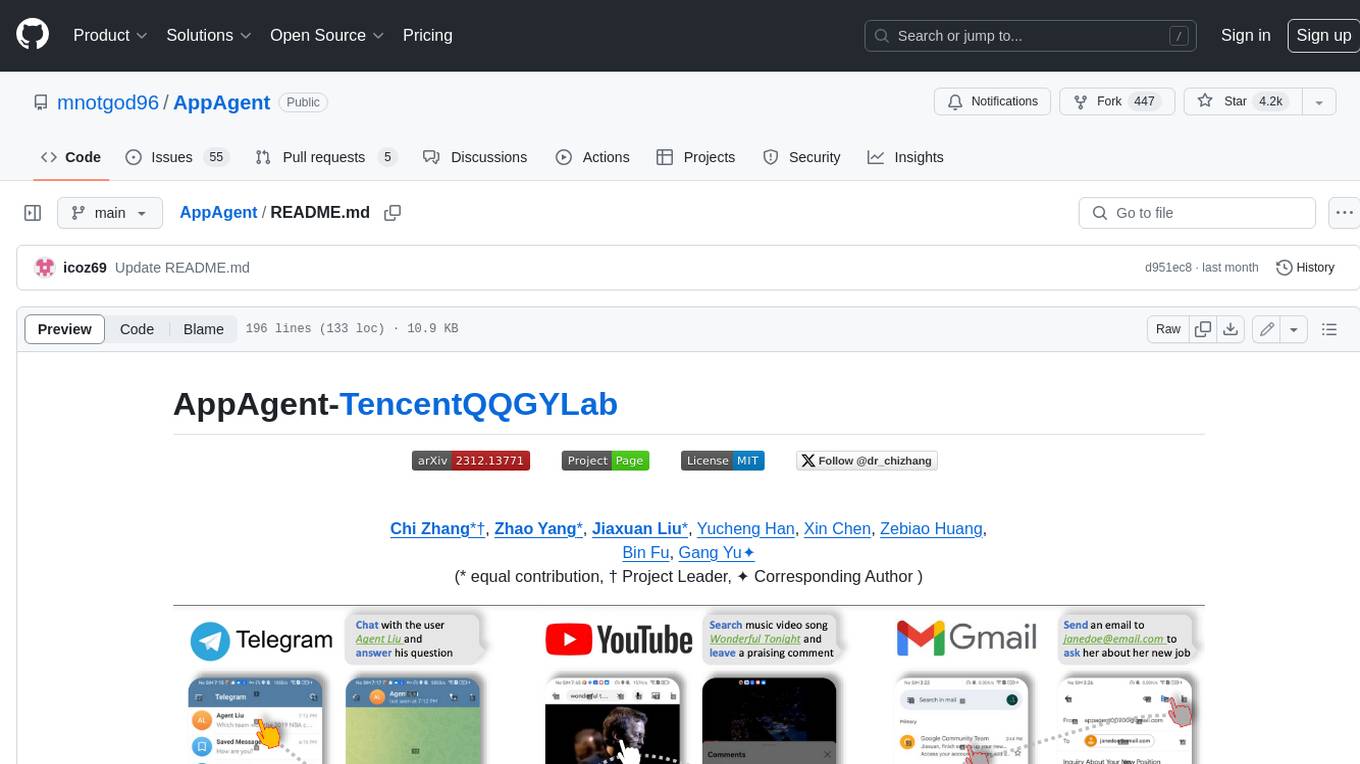
AppAgent
AppAgent is a novel LLM-based multimodal agent framework designed to operate smartphone applications. Our framework enables the agent to operate smartphone applications through a simplified action space, mimicking human-like interactions such as tapping and swiping. This novel approach bypasses the need for system back-end access, thereby broadening its applicability across diverse apps. Central to our agent's functionality is its innovative learning method. The agent learns to navigate and use new apps either through autonomous exploration or by observing human demonstrations. This process generates a knowledge base that the agent refers to for executing complex tasks across different applications.
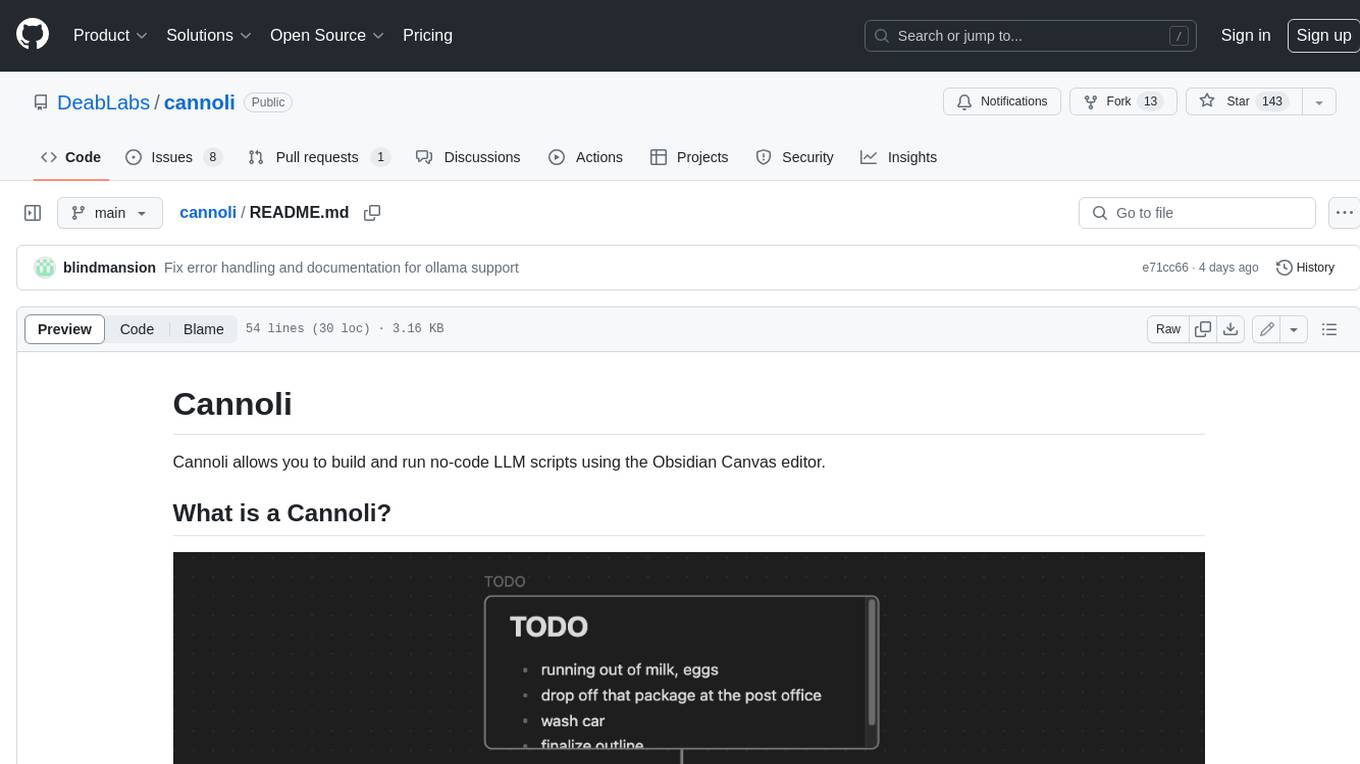
cannoli
Cannoli allows you to build and run no-code LLM scripts using the Obsidian Canvas editor. Cannolis are scripts that leverage the OpenAI API to read/write to your vault, and take actions using HTTP requests. They can be used to automate tasks, create custom llm-chatbots, and more.
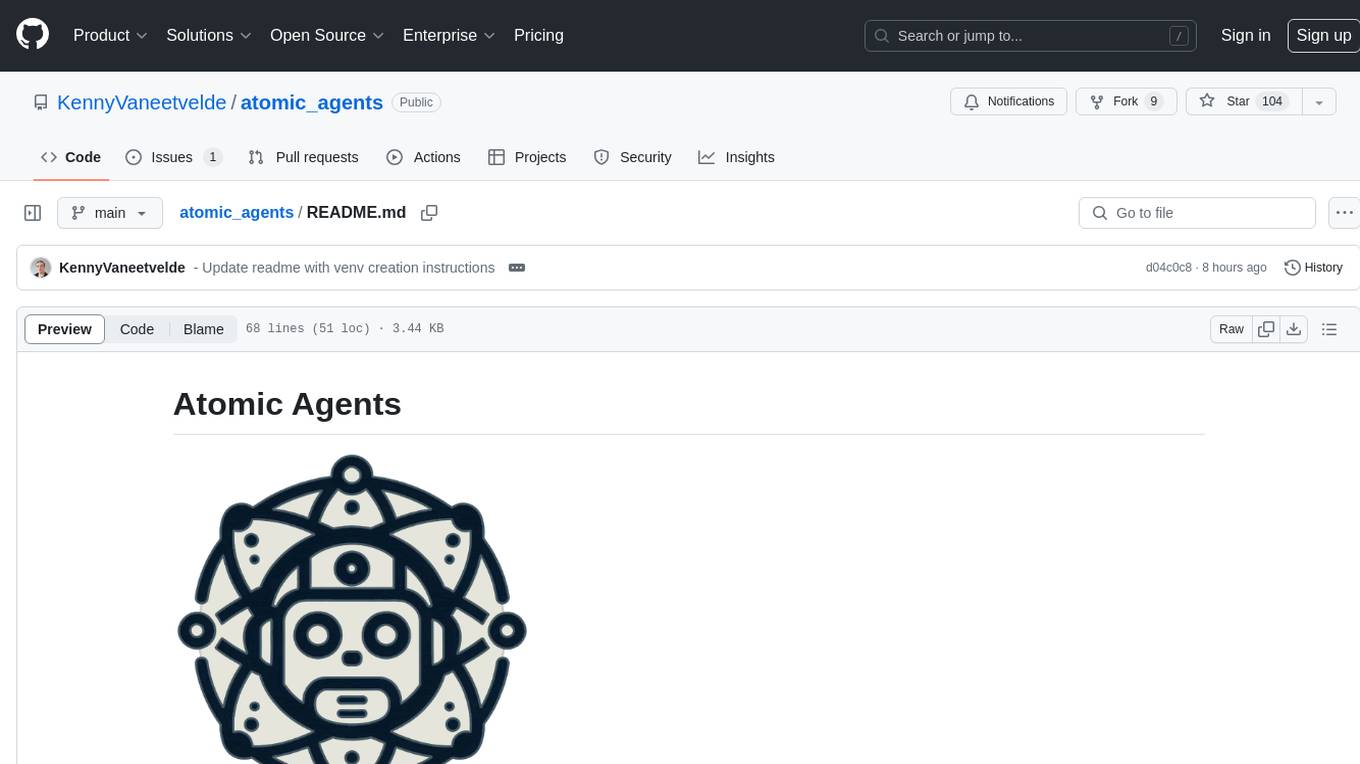
atomic_agents
Atomic Agents is a modular and extensible framework designed for creating powerful applications. It follows the principles of Atomic Design, emphasizing small and single-purpose components. Leveraging Pydantic for data validation and serialization, the framework offers a set of tools and agents that can be combined to build AI applications. It depends on the Instructor package and supports various APIs like OpenAI, Cohere, Anthropic, and Gemini. Atomic Agents is suitable for developers looking to create AI agents with a focus on modularity and flexibility.
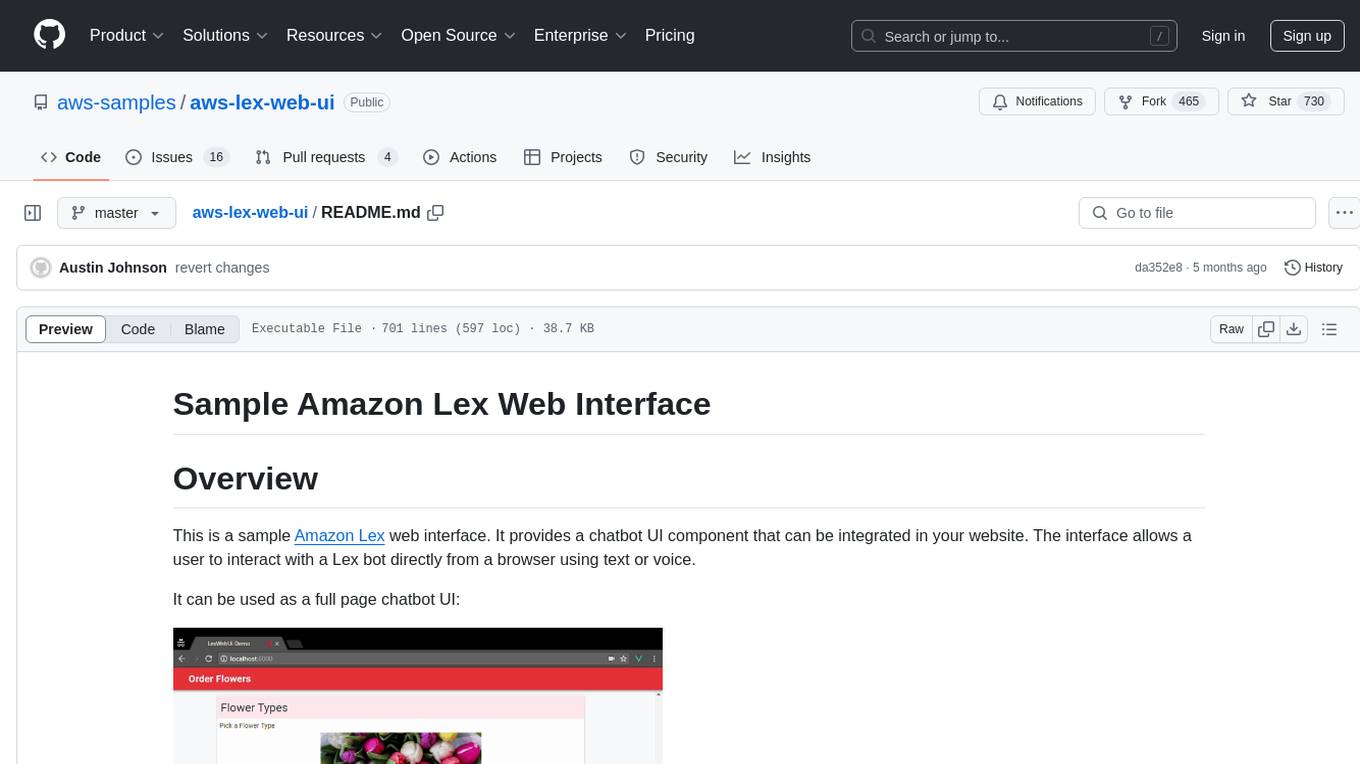
aws-lex-web-ui
The AWS Lex Web UI is a sample Amazon Lex web interface that provides a chatbot UI component for integration into websites. It supports voice and text interactions, Lex response cards, and programmable configuration using JavaScript. The interface can be used as a full-page chatbot UI or embedded as a widget. It offers mobile-ready responsive UI, seamless voice-text switching, and interactive messaging support. The project includes CloudFormation templates for easy deployment and customization. Users can modify configurations, integrate the UI into existing sites, and deploy using various methods like CloudFormation, pre-built libraries, or npm installation.
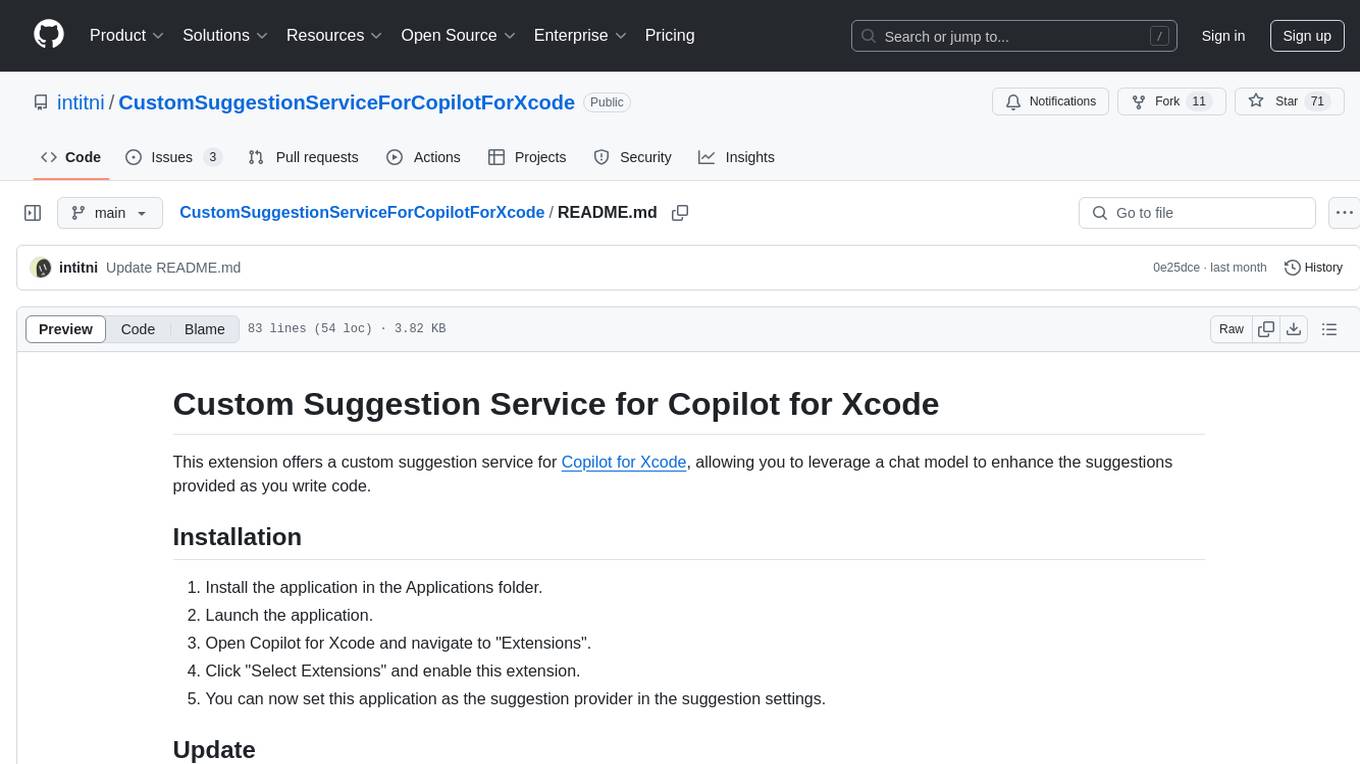
CustomSuggestionServiceForCopilotForXcode
This repository provides a custom suggestion service for Copilot for Xcode, allowing users to enhance code suggestions using chat models. It supports different suggestion services and strategies for generating code suggestions. Users can customize prompt formats and utilize local models for code completion.
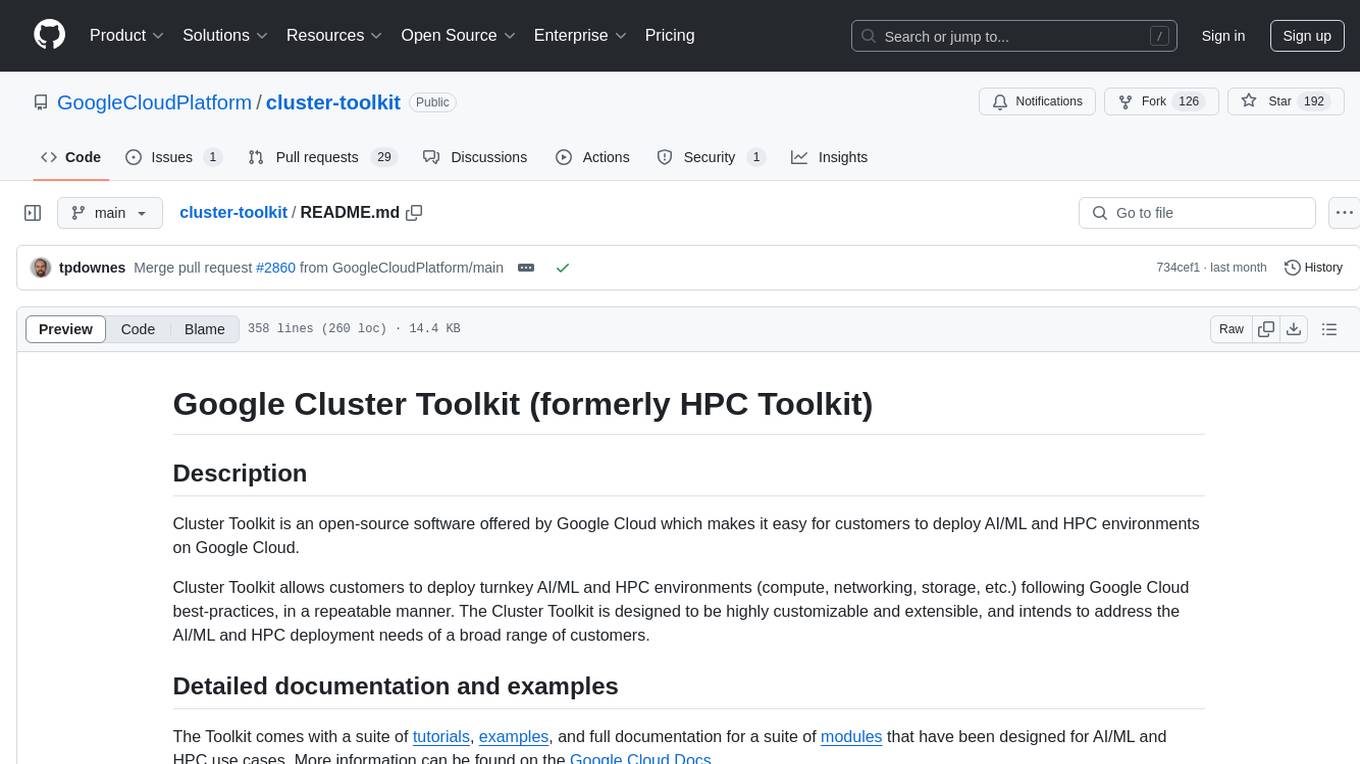
cluster-toolkit
Cluster Toolkit is an open-source software by Google Cloud for deploying AI/ML and HPC environments on Google Cloud. It allows easy deployment following best practices, with high customization and extensibility. The toolkit includes tutorials, examples, and documentation for various modules designed for AI/ML and HPC use cases.
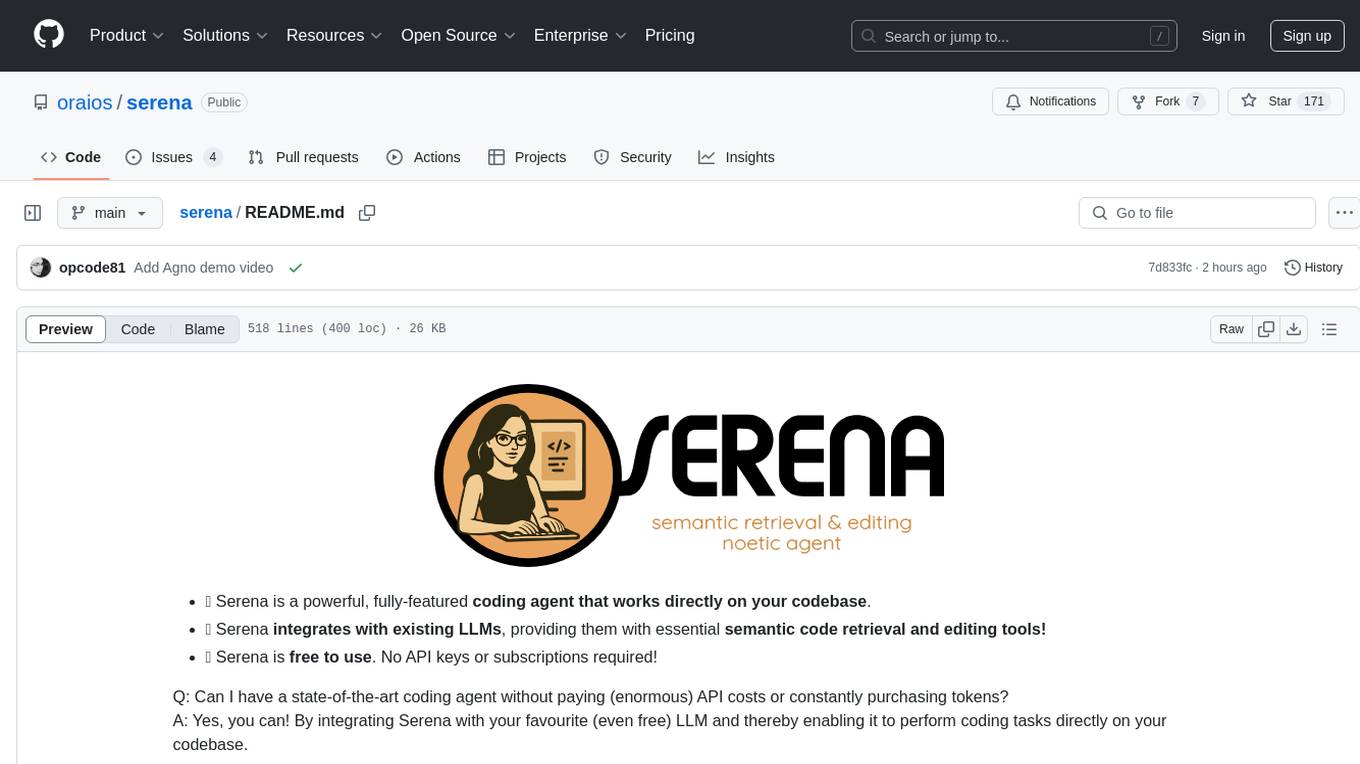
serena
Serena is a powerful coding agent that integrates with existing LLMs to provide essential semantic code retrieval and editing tools. It is free to use and does not require API keys or subscriptions. Serena can be used for coding tasks such as analyzing, planning, and editing code directly on your codebase. It supports various programming languages and offers semantic code analysis capabilities through language servers. Serena can be integrated with different LLMs using the model context protocol (MCP) or Agno framework. The tool provides a range of functionalities for code retrieval, editing, and execution, making it a versatile coding assistant for developers.

NaLLM
The NaLLM project repository explores the synergies between Neo4j and Large Language Models (LLMs) through three primary use cases: Natural Language Interface to a Knowledge Graph, Creating a Knowledge Graph from Unstructured Data, and Generating a Report using static and LLM data. The repository contains backend and frontend code organized for easy navigation. It includes blog posts, a demo database, instructions for running demos, and guidelines for contributing. The project aims to showcase the potential of Neo4j and LLMs in various applications.
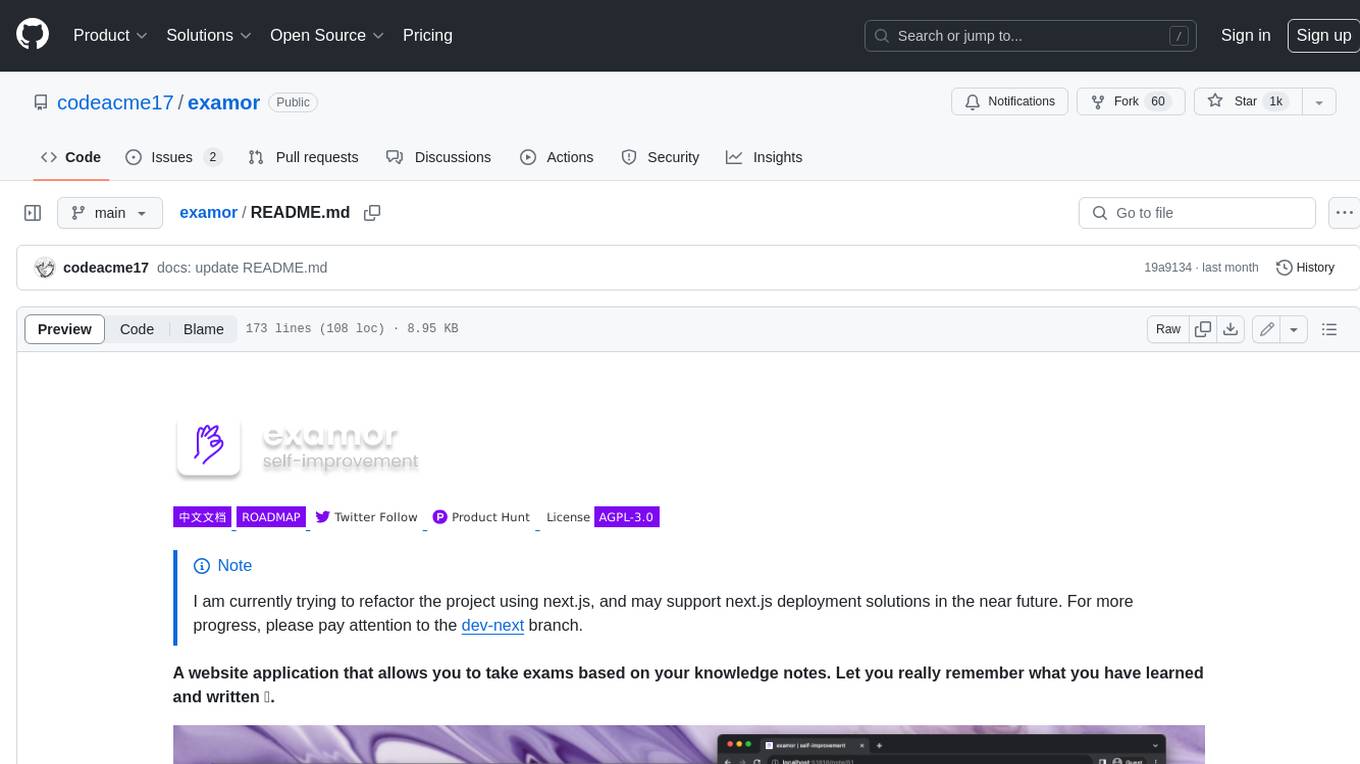
examor
Examor is a website application that allows you to take exams based on your knowledge notes. It helps you to remember what you have learned and written. The application generates a set of questions from the documents you upload, and you can answer them to test your knowledge. Examor also uses GPT to score and validate your answers, and provides you with feedback. The application is still in its early stages of development, but it has the potential to be a valuable tool for learners.
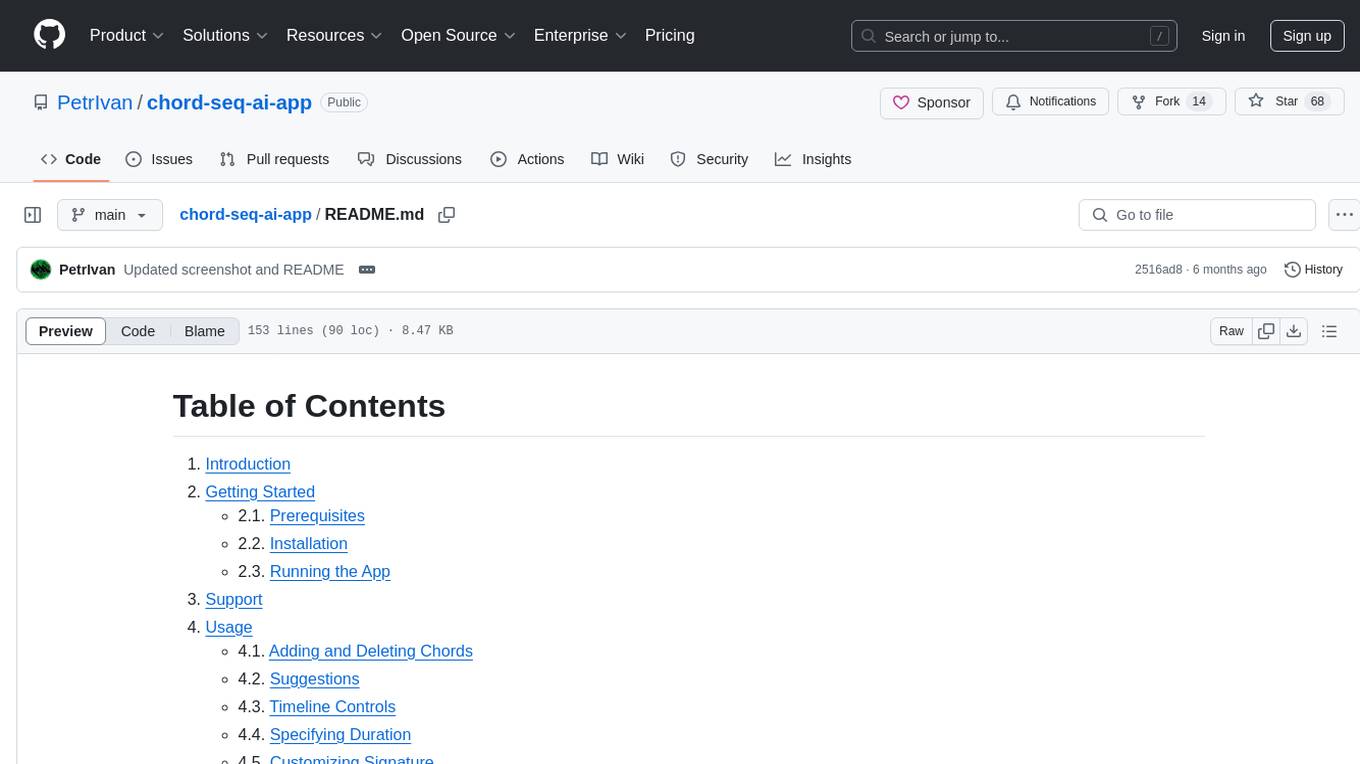
chord-seq-ai-app
ChordSeqAI Web App is a user-friendly interface for composing chord progressions using deep learning models. The app allows users to interact with suggestions, customize signatures, specify durations, select models and styles, transpose, import, export, and utilize chord variants. It supports keyboard shortcuts, automatic local saving, and playback features. The app is designed for desktop use and offers features for both beginners and advanced users in music composition.
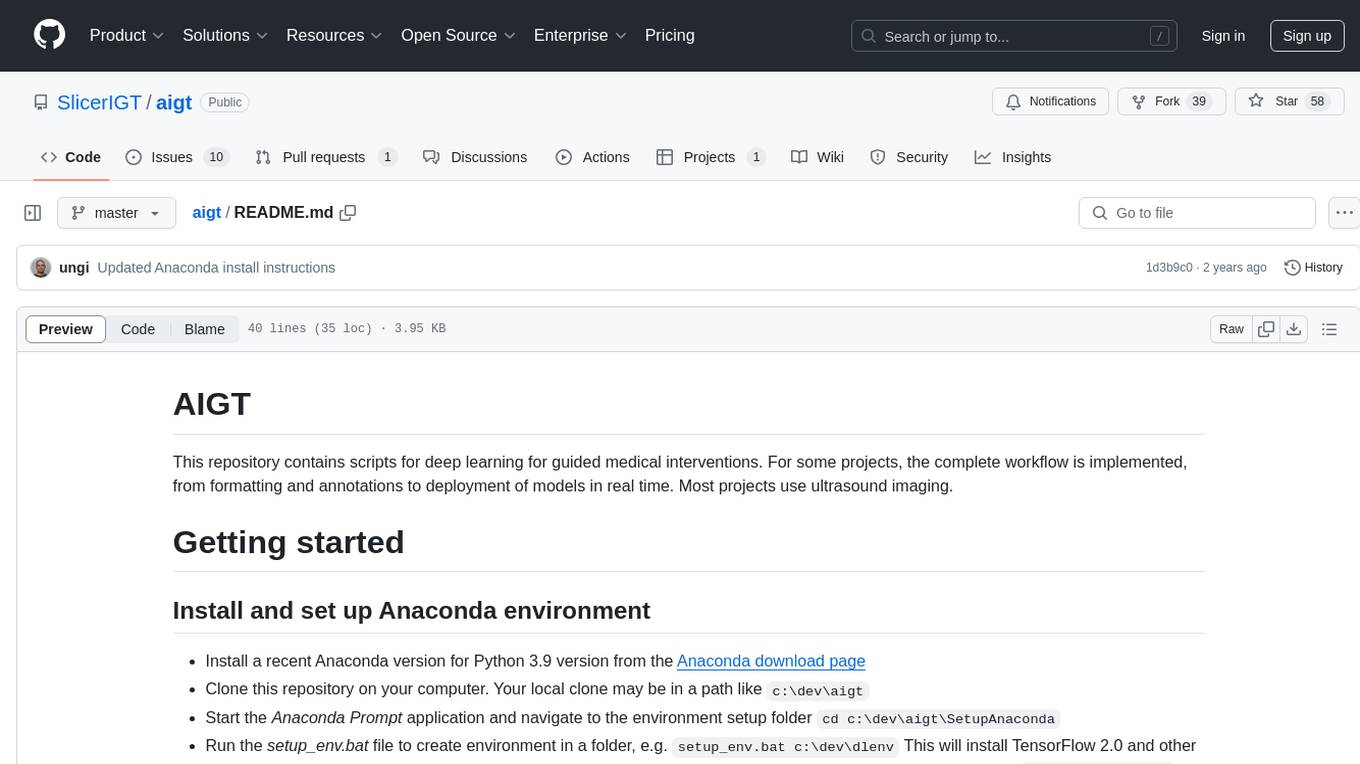
aigt
AIGT is a repository containing scripts for deep learning in guided medical interventions, focusing on ultrasound imaging. It provides a complete workflow from formatting and annotations to real-time model deployment. Users can set up an Anaconda environment, run Slicer notebooks, acquire tracked ultrasound data, and process exported data for training. The repository includes tools for segmentation, image export, and annotation creation.
For similar tasks

safe-airdrop
The Gnosis Safe - CSV Airdrop is a Safe App designed to simplify the process of sending multiple token transfers to various recipients with different values in a single Ethereum transaction. Users can upload a CSV transfer file containing receiver addresses, token addresses, and transfer amounts. The app eliminates the need for multiple transactions and signature thresholds, streamlining the airdrop process. It also supports native token transfers and provides a user-friendly interface for initiating transactions. Developers can customize and deploy the app for specific use cases.
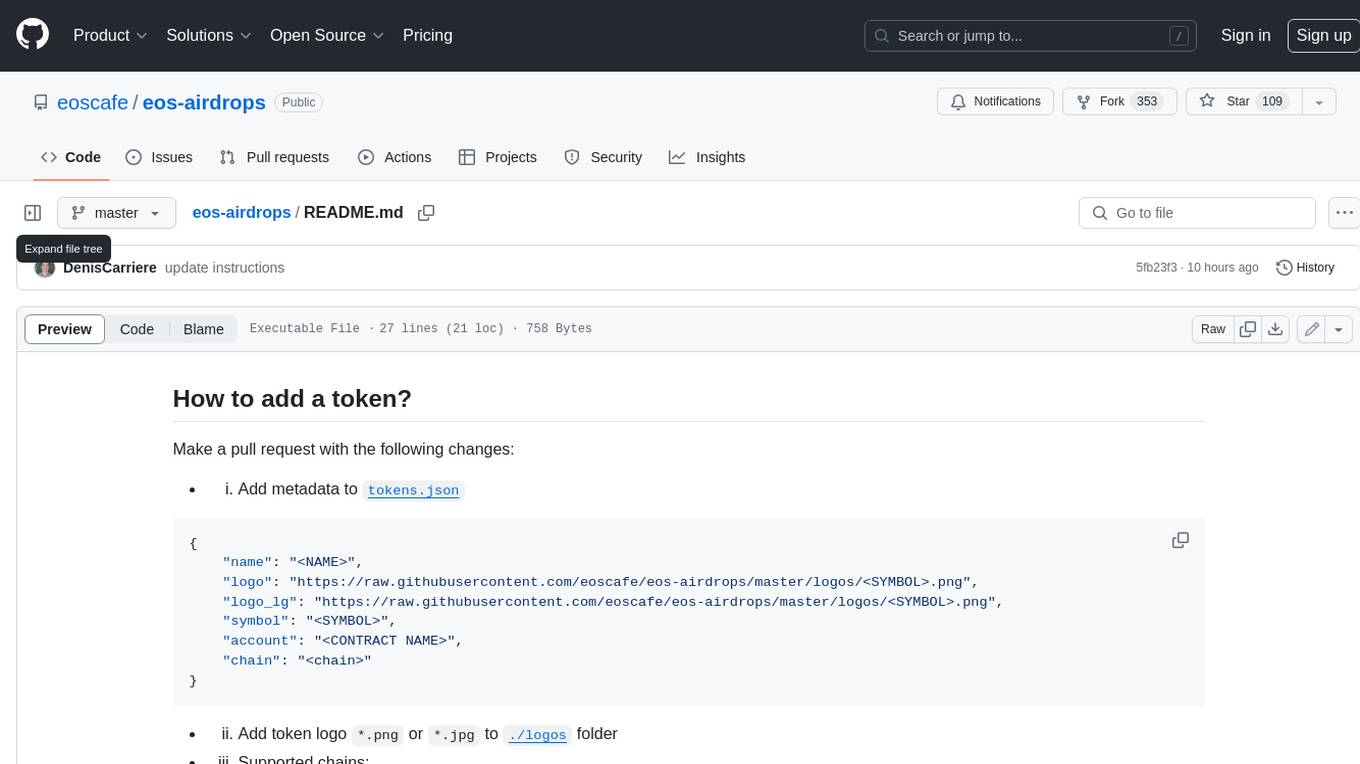
eos-airdrops
This repository contains a list of EOS airdrops. Airdrops are a way for projects to distribute tokens to their community. They can be used to reward early adopters, promote the project, or raise funds. This repository includes airdrops for a variety of projects, including both new and established projects.
For similar jobs
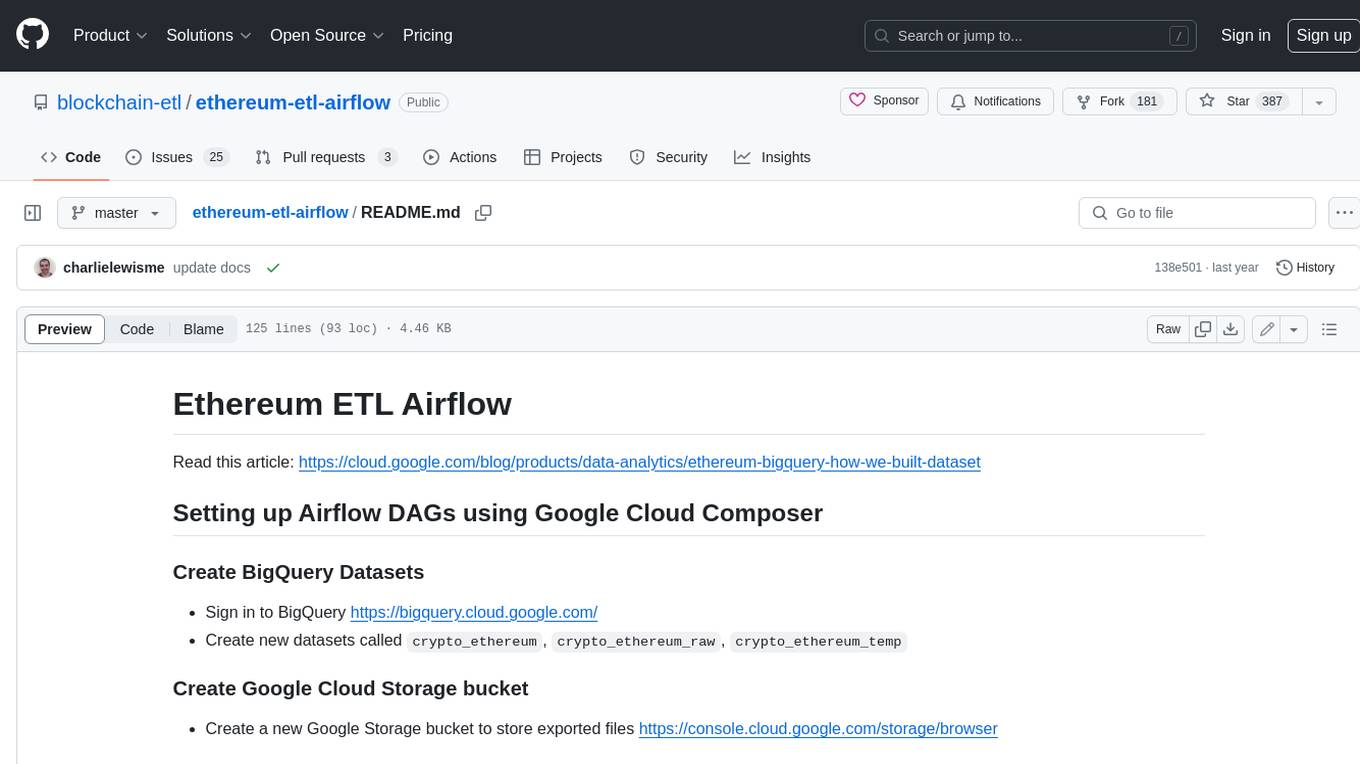
ethereum-etl-airflow
This repository contains Airflow DAGs for extracting, transforming, and loading (ETL) data from the Ethereum blockchain into BigQuery. The DAGs use the Google Cloud Platform (GCP) services, including BigQuery, Cloud Storage, and Cloud Composer, to automate the ETL process. The repository also includes scripts for setting up the GCP environment and running the DAGs locally.
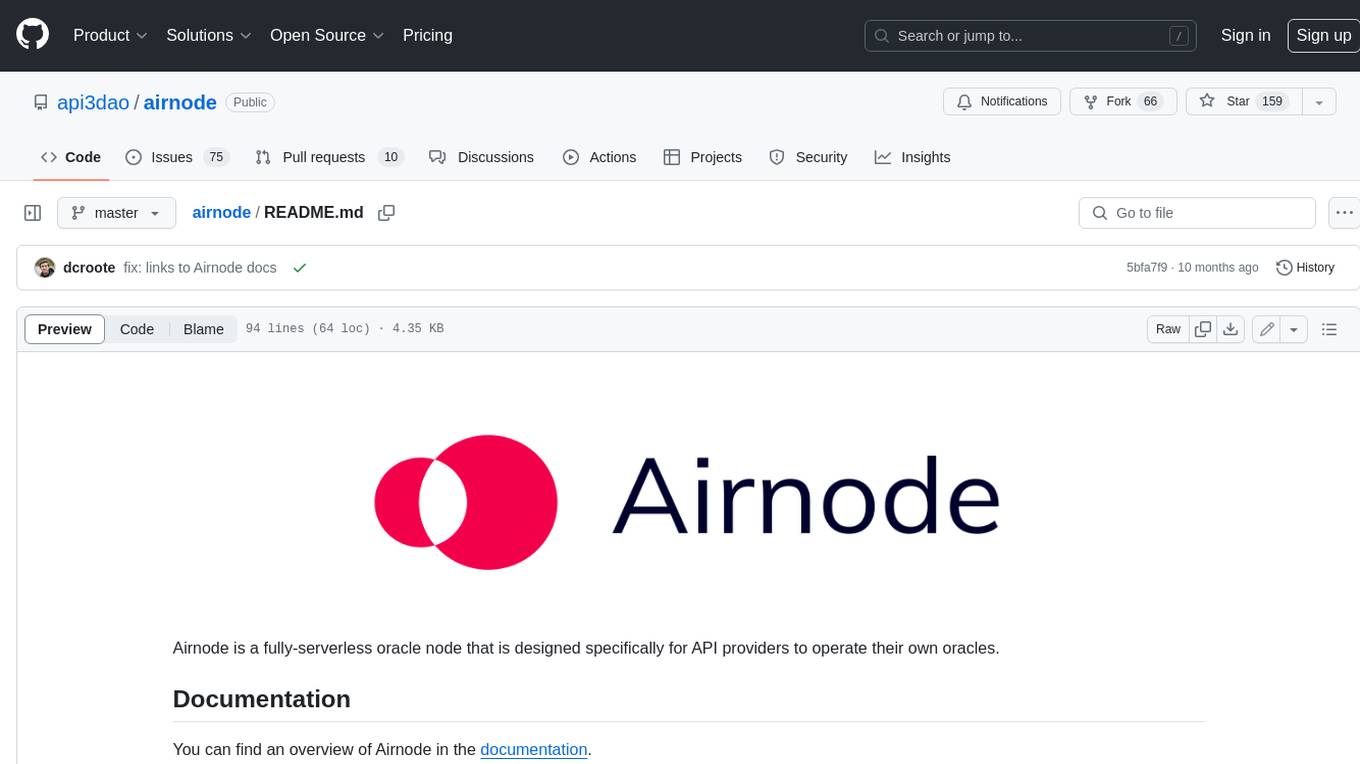
airnode
Airnode is a fully-serverless oracle node that is designed specifically for API providers to operate their own oracles.
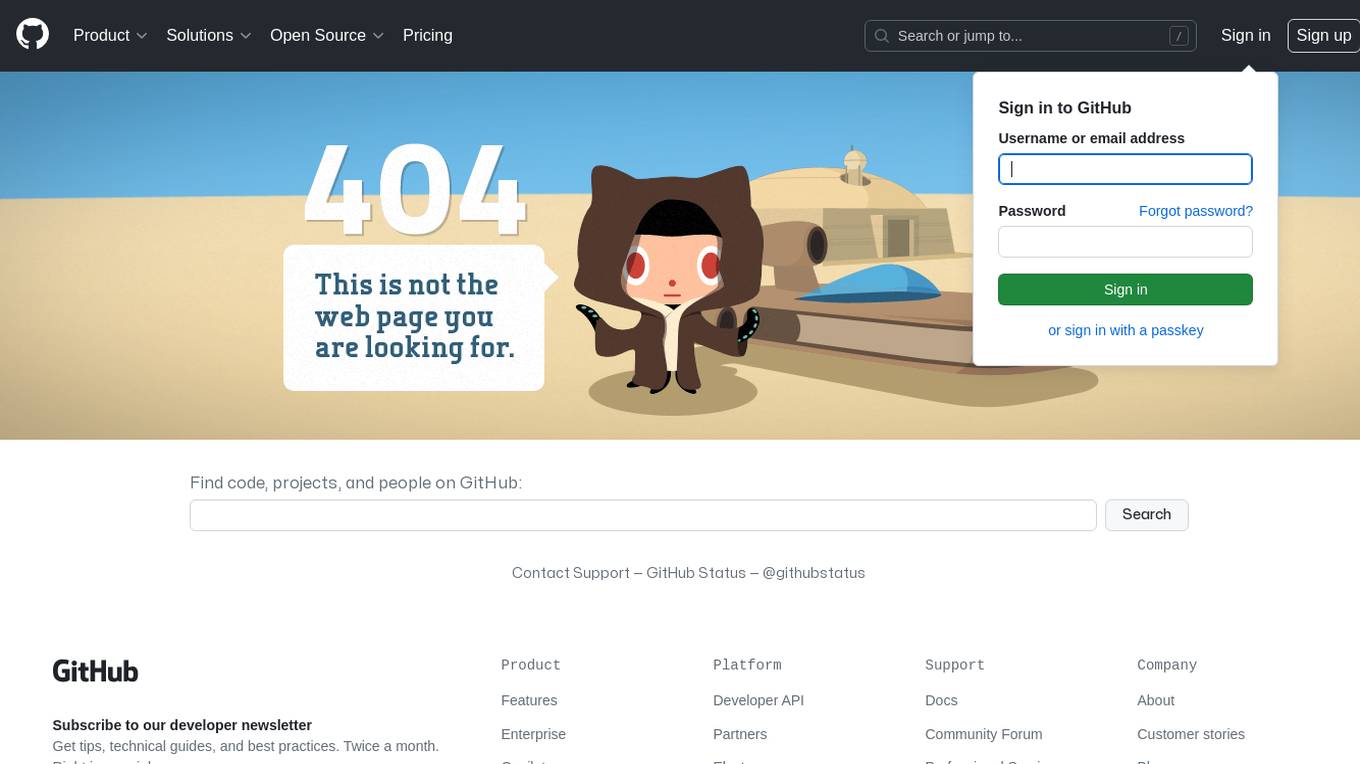
CHATPGT-MEV-BOT
The 𝓜𝓔𝓥-𝓑𝓞𝓣 is a revolutionary tool that empowers users to maximize their ETH earnings through advanced slippage techniques within the Ethereum ecosystem. Its user-centric design, optimized earning mechanism, and comprehensive security measures make it an indispensable tool for traders seeking to enhance their crypto trading strategies. With its current free access, there's no better time to explore the 𝓜𝓔𝓥-𝓑𝓞𝓣's capabilities and witness the transformative impact it can have on your crypto trading journey.
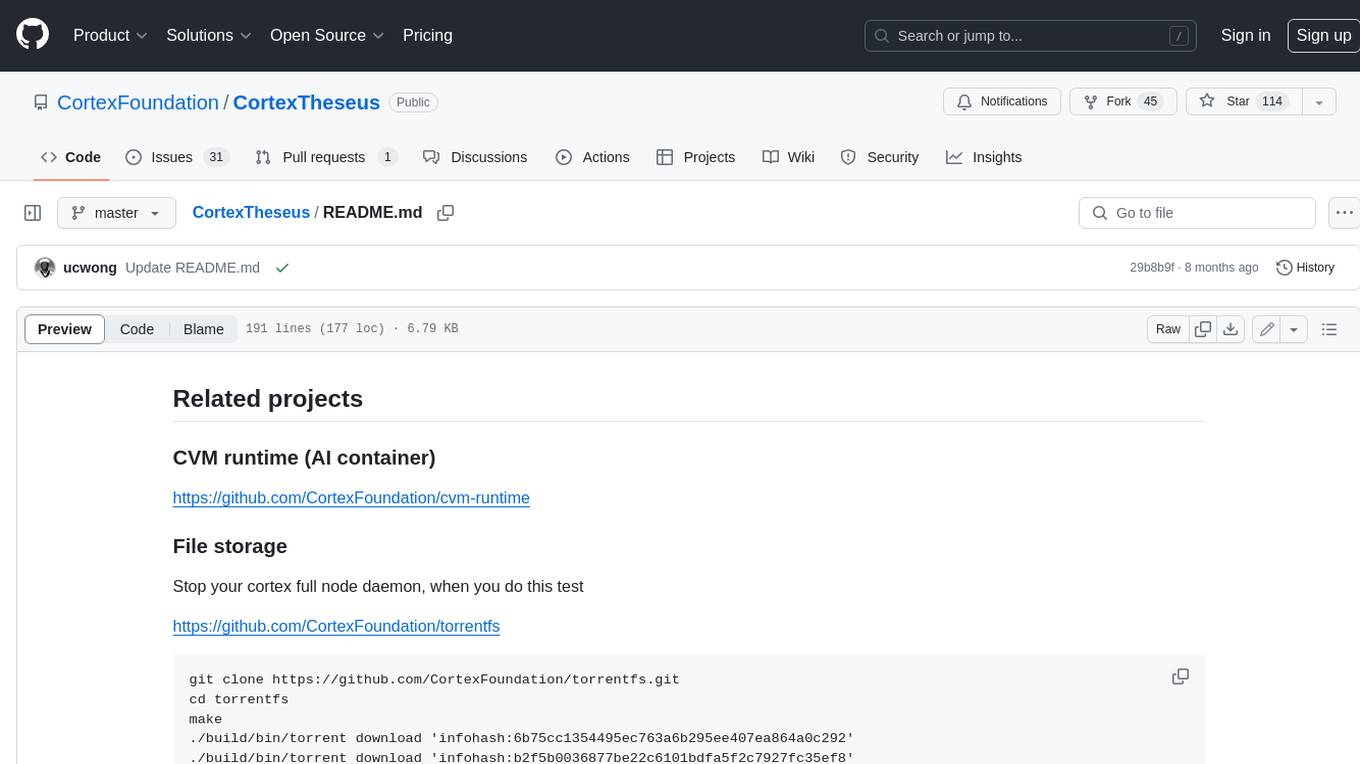
CortexTheseus
CortexTheseus is a full node implementation of the Cortex blockchain, written in C++. It provides a complete set of features for interacting with the Cortex network, including the ability to create and manage accounts, send and receive transactions, and participate in consensus. CortexTheseus is designed to be scalable, secure, and easy to use, making it an ideal choice for developers building applications on the Cortex blockchain.
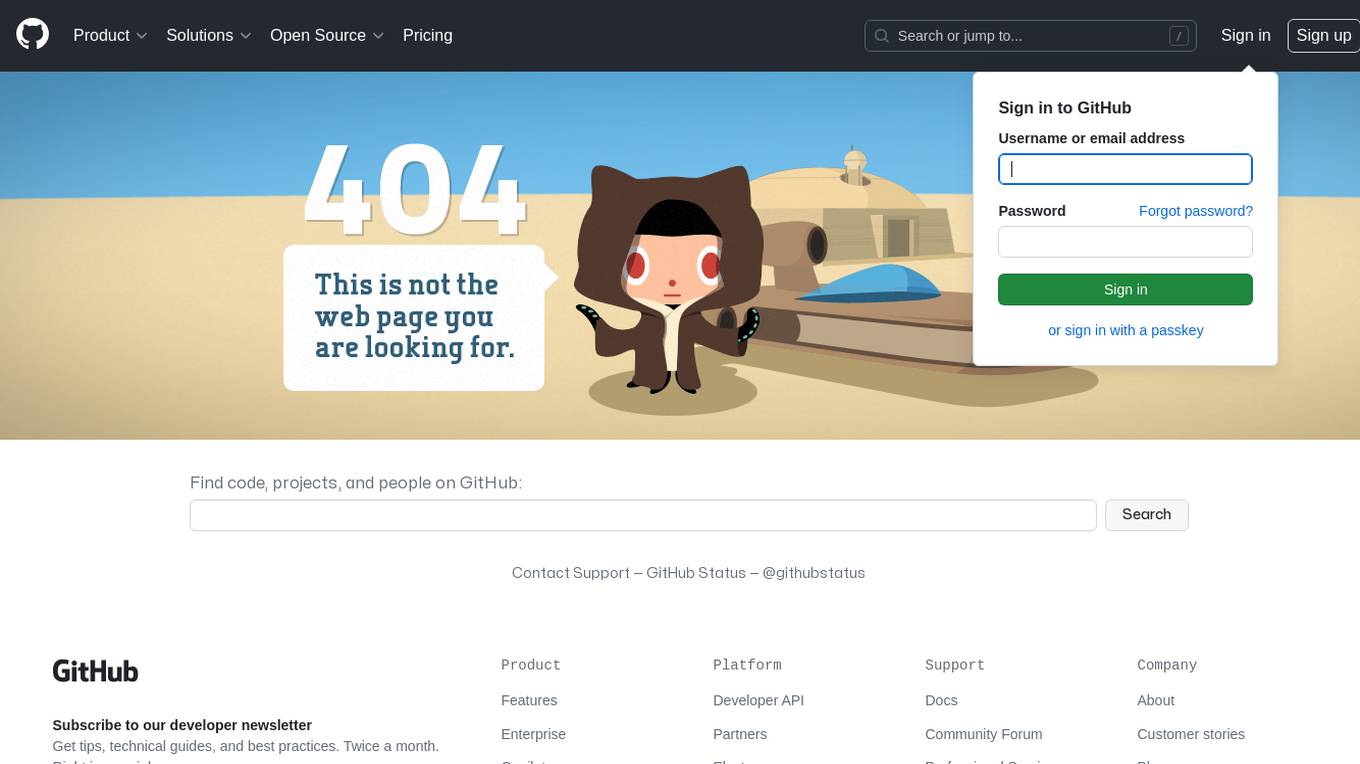
CHATPGT-MEV-BOT-ETH
This tool is a bot that monitors the performance of MEV transactions on the Ethereum blockchain. It provides real-time data on MEV profitability, transaction volume, and network congestion. The bot can be used to identify profitable MEV opportunities and to track the performance of MEV strategies.
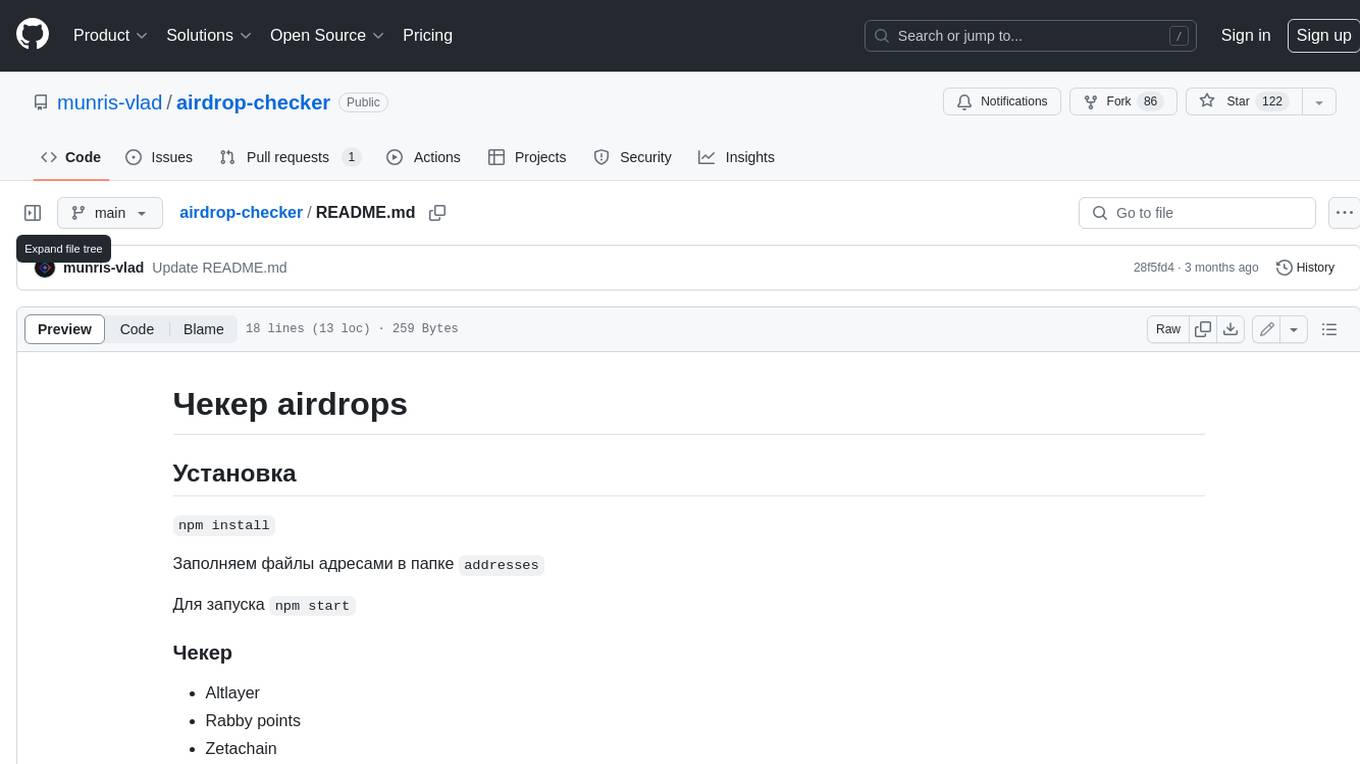
airdrop-checker
Airdrop-checker is a tool that helps you to check if you are eligible for any airdrops. It supports multiple airdrops, including Altlayer, Rabby points, Zetachain, Frame, Anoma, Dymension, and MEME. To use the tool, you need to install it using npm and then fill the addresses files in the addresses folder with your wallet addresses. Once you have done this, you can run the tool using npm start.
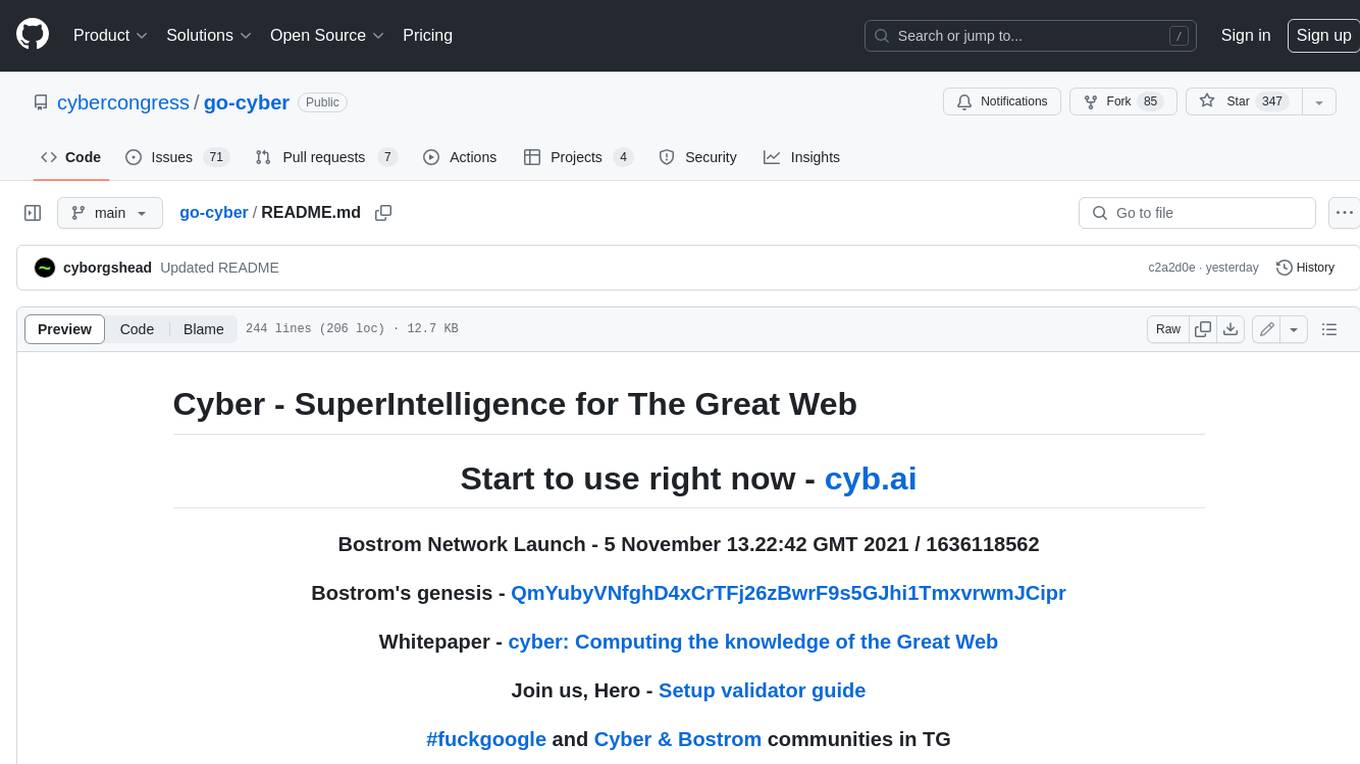
go-cyber
Cyber is a superintelligence protocol that aims to create a decentralized and censorship-resistant internet. It uses a novel consensus mechanism called CometBFT and a knowledge graph to store and process information. Cyber is designed to be scalable, secure, and efficient, and it has the potential to revolutionize the way we interact with the internet.
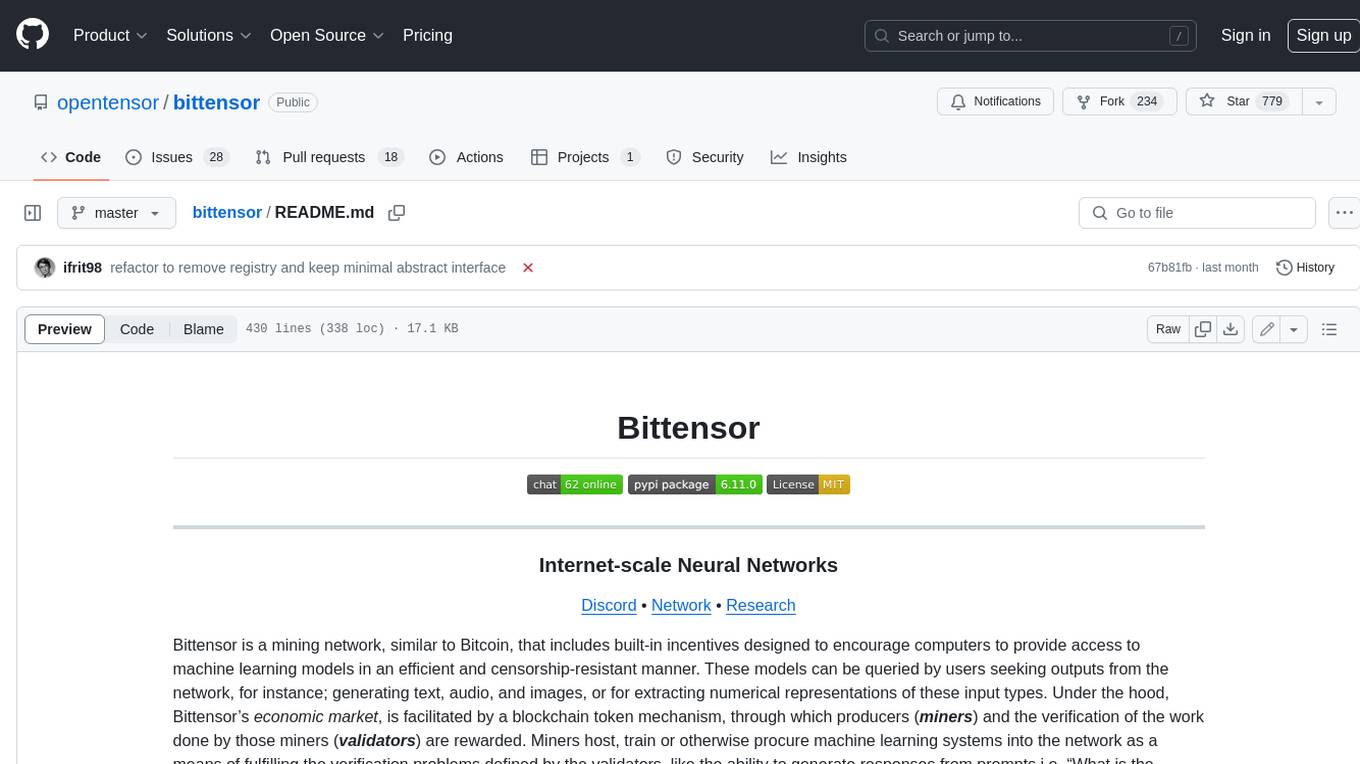
bittensor
Bittensor is an internet-scale neural network that incentivizes computers to provide access to machine learning models in a decentralized and censorship-resistant manner. It operates through a token-based mechanism where miners host, train, and procure machine learning systems to fulfill verification problems defined by validators. The network rewards miners and validators for their contributions, ensuring continuous improvement in knowledge output. Bittensor allows anyone to participate, extract value, and govern the network without centralized control. It supports tasks such as generating text, audio, images, and extracting numerical representations.



